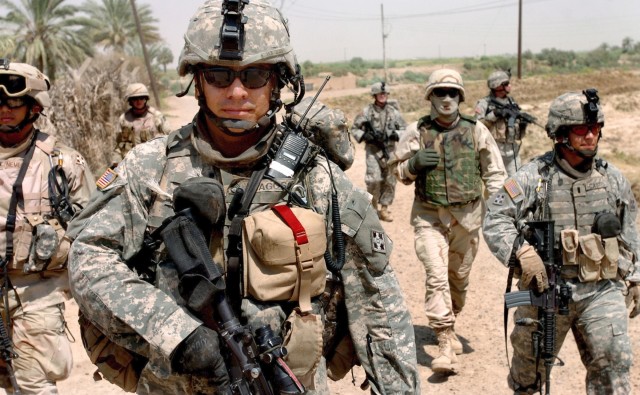The Army marks the 35th anniversary of the all-volunteer force July 1.
The idea of an all-volunteer force, while not new, was born amidst the withdrawal of U.S. forces from South Vietnam in the summer of 1969. President Richard M. Nixon, who had called for an end to the draft during the 1968 presidential campaign, instructed the Army chief of staff, Gen. William C. Westmoreland, to determine the feasibility of ending the Army's reliance on selective service to fill the ranks.
While not totally sold on the volunteer army idea, Westmoreland noted in an address to the Association of the United States Army on Oct. 13, 1970, that "the Army is committed to an all-out effort in working toward a zero draft - a volunteer force."
Westmoreland appointed Lt. Gen. George I. Forsythe, commander of Combat Developments Command, as special assistant for the Modern Volunteer Force. Forsythe's mission was to ensure the Army stayed committed to a "zero draft" and to implementing recommendations from a commission headed by Thomas Gates that the Army stop relying on draftees. Westmoreland gave Forsythe authority to overcome bureaucratic and congressional opposition to an all-volunteer force had experienced firsthand the effects of leading into combat a force based almost exclusively on draftees. Given the Vietnam War's corrosive effects on the Army's ability to defend the United States and its allies, both Westmoreland and Forsythe saw as their objective the restoration of professional standards in the officer corps and senior enlisted ranks. They viewed the adoption of the all-volunteer concept as an opportunity to restore the Army's ability to fight and win wars.
Westmoreland and Forsythe saw the all-volunteer force as a means to rebuild the Army into a first-rate fighting force. To do this, they put the Soldier and his ability to win on the battlefield at the center of any reform program. In fact, both men saw the all-volunteer force as a means to restore the primacy of the combat arms. With strong support from Secretary of the Army Stanley R. Resor, Westmoreland and Forsythe instituted reforms that redirected the Army's focus from Vietnam toward being capable of defeating a Soviet and Warsaw Pact attempt to overrun Western Europe.
To help recruit a qualified force, the two generals created a modern recruiting corps. Through various pay and education incentives, as well as such personnel reforms as restoring the much-depleted NCO corps, Westmoreland's efforts seemed to have paid off by the end of his tenure in October 1972. By the end of 1973, a reinvigorated Army Recruiting Service had enlisted some 180,000 young men, primarily for armor, infantry and artillery.
For the next several years, despite declining propensity for military service among America's youth, the Army met even with the difficulties Army recruiters faced in attracting people to the ranks in the late 1970s, Army Recruiting Command labored on, and through much effort had by 1980 turned the corner in attracting qualified high-school graduates. By the mid-1980s, the Army's ranks began to fill not only with qualified high school graduates, but also, and more importantly, with highly motivated young men and women.
By the end of the AVF's first decade, senior leaders could point to success. More importantly, leaders could point to the fact that the all-volunteer Army passed its first major combat test - on Grenada - in October 1983. By the AVF's 20-year mark, the all-volunteer concept had undergone perhaps its most arduous test, operations Desert Shield and Desert Storm, in 1990 and 1991. U.S. and coalition forces defeated and evicted a battle hardened Iraqi army from Kuwait in four days.
Regular Army, Army National Guard and Army Reserve Soldiers carry forth that tradition as they patrol Baghdad, Sadr City and the mountains of Afghanistan. Also, recruiters continue to meet or exceed recruiting objectives, a tribute to the founders of the all-volunteer concept. Today's Soldier is a standard bearer of one of the Army's greatest success stories - the all-volunteer force.
(See the July issue of Soldiers magazine)




Social Sharing